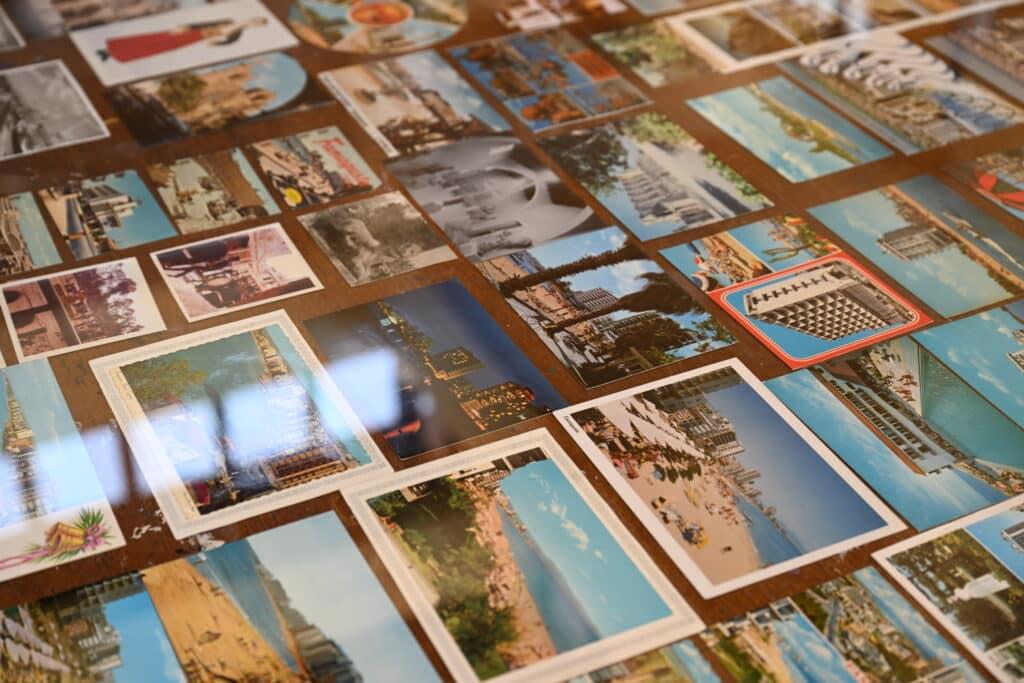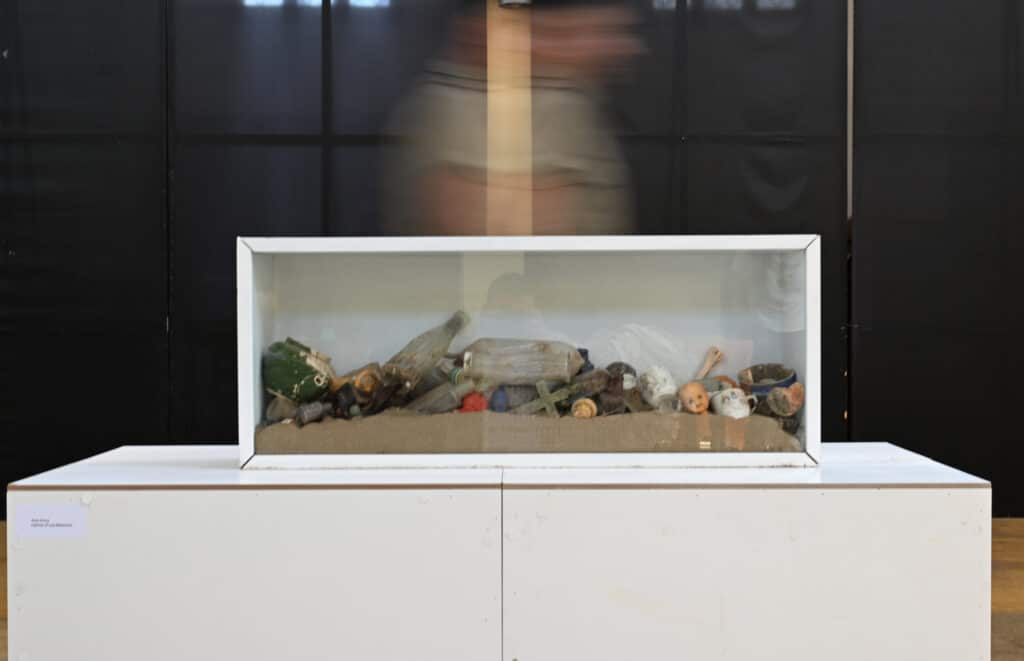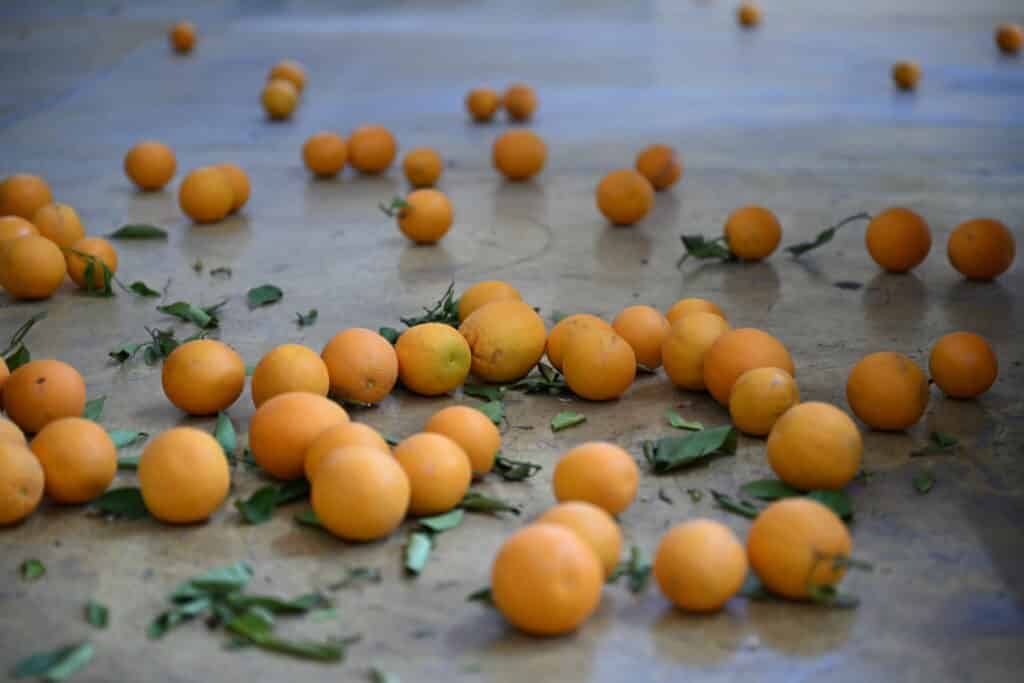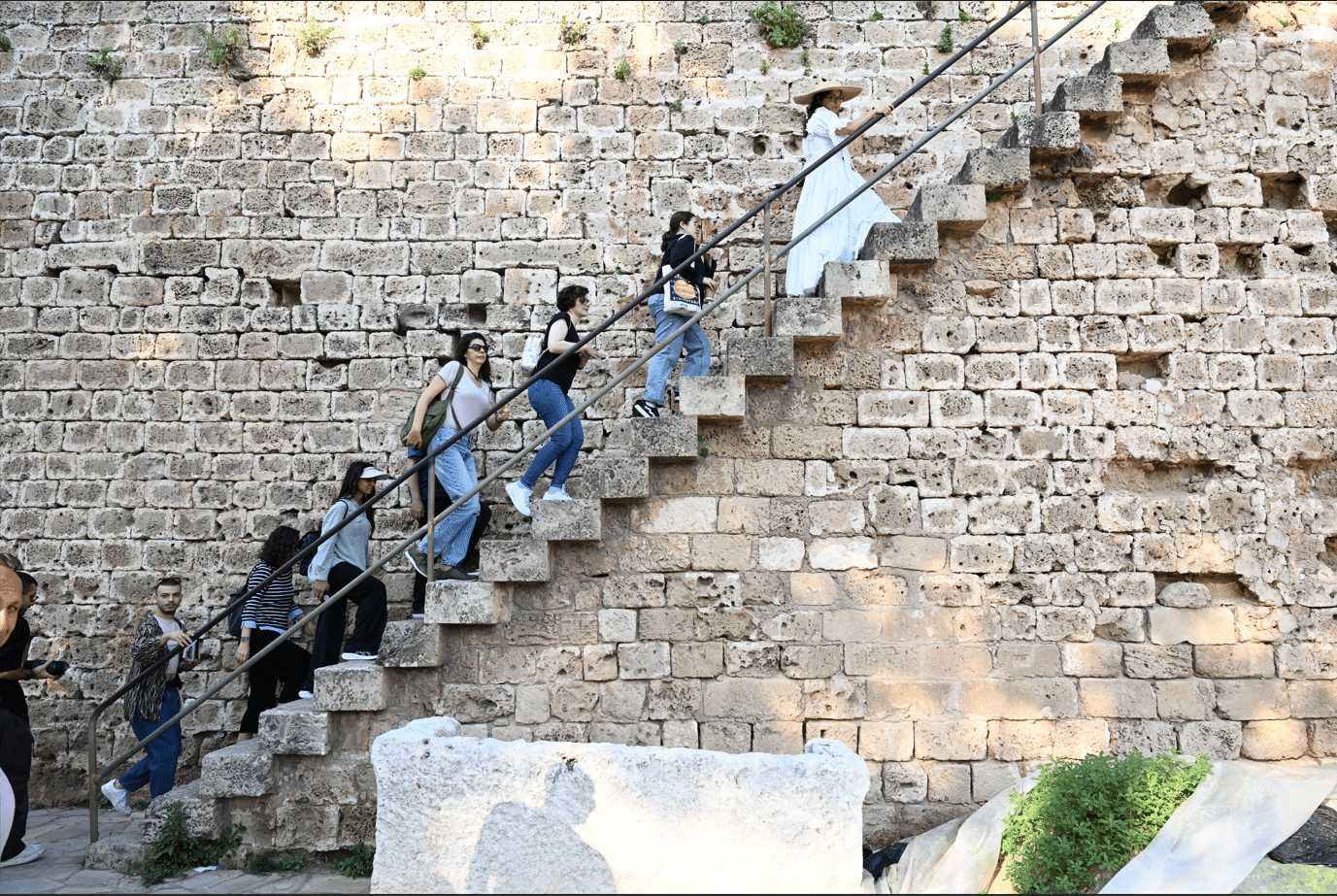Festival aims to ‘revisit all the atrocities that happened, understand them, forgive them and throw them away’
“It was a ghost town to me until I met a Varoshian. I never called it a ghost town again after that, because it’s not a ghost town; we made it into a ghost town. It’s the Varoshians that made me understand that it’s not a ghost town; that it’s a town that people lived in and have memories in,” said Aysu Arsoy as she described her ‘Cabinet of Lost Memories’ project set in the Bandabuliya in the heart of the walled city of Famagusta.
Imprints of last weekend’s New Famagusta Museum Festival (FNM) linger in my mind as I attempt to process the stories, images, oral histories and moments in time as I weaved myself through the festival’s programme.
The core of the festival pertinently took place in the heart of the walled city of Famagusta and within the newly renovated premises of the city’s old municipal market (Bandabuliya).
Geared towards the cultural revival and social reconciliation of Cyprus, an array of events unfolded in the market in the morning, followed by satellite events in the old city and Varosha.
Everything I delved into during the one-day festival poignantly awoke in me a new understanding of the area, its peoples, both past and present.

Postcards from the past
It’s through Aysu Arsoy and Hacer Basarir that I discovered the ‘Delik Plajı’ (The Hole Beach), a popular spot savoured by those living in the walled city until it was repurposed to expand Famagusta port. The audience shared their memories of the café set on the beach; their recollection of the juke box in the café that played ‘Oh Carol’ by Neil Sedaka, their group photographs in beachwear posing as carefree youth just outside the fortified walls of the city which were opened up in three locations (hence the name The Hole) for people to have access to the sea.
Arsoy and her ‘Cabinet of Lost Memories’ is one who made me understand how connecting the past to the future and sharing our memories can indeed reconcile traumas of war. It’s once she realised that the objects that she was collecting from a field in the vicinity of the old town was actually the dumping ground field of Varosha that she began creating meaning to the hundreds of toys, broken ceramics, plates, marbles and the likes.
“The more pieces I collected and shared, the more Varoshians I met and I began to learn about which house they lived in, which flowers they collect, which food they taste… I couldn’t see Varosha from my own eyes anymore, I started seeing it from their eyes, the ghost town suddenly changed perspective for me,” she said.
Indeed, that was the beauty of this festival: changing perspectives, building new narratives, witnessing the past and in turn looking towards the future.

Aysu Arsoy’s Cabinet of Lost Memories
“Art can evolve,” said Nurtane Karagil who was echoed by Eralp Kortach, both project leaders of the FNM. “You can actually shape your ideas and space through the arts and it’s one of the big helpers in our life in Cyprus; it enables us to ask so many good questions which are usually traumatic and don’t have answers to but art always helps you understand your environment and your space,” she added, pinpointing that the artists and researchers participating in the festival are known for their work on the Cyprus issue. “Not in a sad, traumatic way, but always embracing the past while generating the future.”
To this end, the Famagusta New Museum (FNM) is an initiative which was instigated by former deputy culture minister Yiannis Toumazis almost a decade ago and had to be adjusted according to the times, such as the opening of Varosha to the wider public.
“The idea was to revisit all the atrocities and nasty things that happened to our people, understand them, forgive them and throw them away; lock them in closed spaces for no one to see them anymore and focus on the future and how we would use the physical space of our city, how we would bring together all the communities that live here, how we could make things thrive again together in peace and in harmony,” he said.
With the motto, ‘I understand and forgive the past, I love and generate the future’ the Pierides Foundation, of which Toumazis was director at the time, and the K10 community space led by Karagil drove the idea forward. Today, it’s a bold contribution towards the island’s reconciliation materialised through collating and exposing an abundance of audio-visual data from Varosha and the area that enables the social, cultural and political reactivation of the occupied town, while readdressing the traditional role of museums in contemporary societies through three axes.
The main axis is its online museum to be launched in the coming months, which consists of a repository of a lost and found platform where people who lived in and have memories from Famagusta share their own photographs and materials with the wider public. In parallel, a number of physical events and hands-on-workshops on tradition and its revival that lean towards the experiential aspect of reconciliation have been taking place, including last weekend’s closing festival.

Nurtane Karagil, Yiannis Toumazis (Centre) and Eralp Kortach welcome guests to the FNM
Perhaps the most valuable axis of the museum is its walking tours (sounds maps) in both Varosha and old Famagusta that invite people to walk through Famagusta through the voices and memories of past and current residents. The geolocated audio tours are activated once on location where you can hear the voices and narratives of the community and thus foster a deeper understanding of Famagusta’s rich heritage.
“These are emotional walks in Varosha,” said Karagil. “A lot of people found a reason to enter Varosha through these sound maps because the way in which Varosha was opened wasn’t democratic and as locals, we found it difficult to enter that space (under these circumstances). Using sound maps in these kinds of locations makes you much freer because the sound gives you another layer of the space. It’s not about where you are allowed to go and see, you can have another layer of reality that you can connect with. It’s really important for us to hear real stories about our past and remember it in a beautiful way.”
There are five sound maps currently available both in Varosha and the old city of Famagusta, with more set to be recorded in the near future.
The first walk, recorded by Toumazis who lived in Varosha until he was 14, recollects his childhood memories, he walks you past his elementary and high school, his friends’ and relatives houses, he talks about the architecture of the time, his favourite toy shop which is now abandoned and looted and the first theatrical play he went to. And he also talks about difficult memories, the first time he saw a dead body, what he packed as they left the town under the sound of war planes.
Avghi Frangopoulou, also a teenager when she left Varosha, delivers a sentimental walk of Varosha. She sets the tone by establishing that she’s not a ghost and that her city is not a ghost either.
Serdar Atai offers a walk from his childhood home and walks you around the old town of Famagusta through his rich knowledge of the heritage of the town.
Inal Bilsel, who also delivered a live performance at the closing of the festival, lends an alternative approach with his sound map.
“I called my sound map Hijacked Memory because I grew up in a house that originally belonged to a Greek Cypriot who apparently didn’t have the chance to live there… when the apartment was given to us as a university lodging, and as I was growing up, I contemplated about all these issues and I felt like I was living someone else’s memories and I was hijacking that memory from whoever was supposed to live there.”
His sound map ends at this apartment house and takes you to different points on the outskirts of Varosha, including the zoo and his childhood playground that is now abandoned.

A nod to the famous annual Famagusta Orange Festival
Salamis Aysegul Sentug takes you on a walk from a fictional point of view based on her yet to be published debut novel set in 1886. Her protagonist is a Victorian traveller who travelled to Cyprus on her honeymoon and develops a friendship with Cypriot woman with whom she travels the island. It’s through this character that Salamis shares memories of Famagusta.
These are merely highlights of the festival and the initiative as a whole. The guided tours of the exhibition, panel series, the workshops on imaginative and hopeful future editions of Famagusta Orange Festival, screenings, and musical programme all contributed to my walking away with faith in a multitude of individuals who are striving to bring the past of Famagusta to the foreground, all the while aspiring to manifest a future that seeks to heal the region’s hefty history and build on new memories. I’ve definitely got new ones to cherish.







Click here to change your cookie preferences